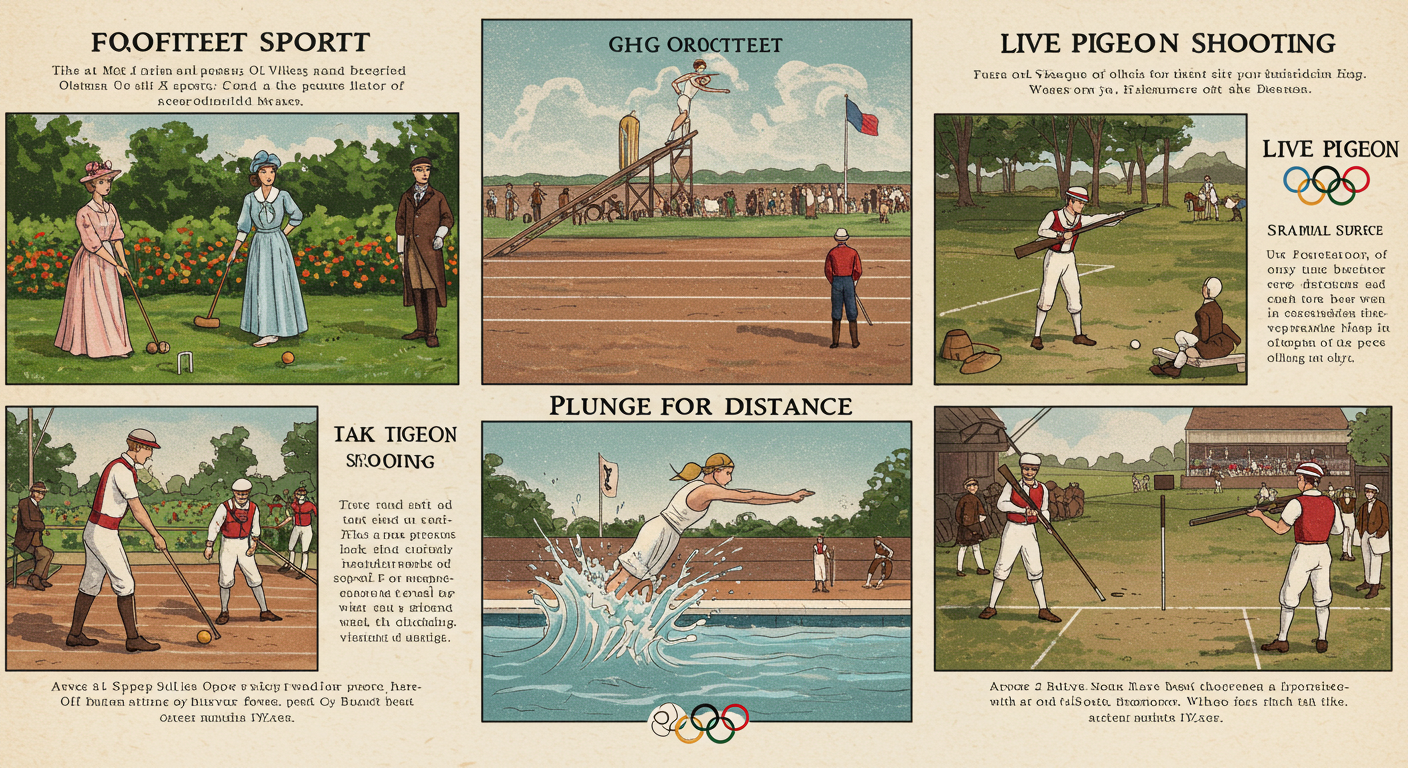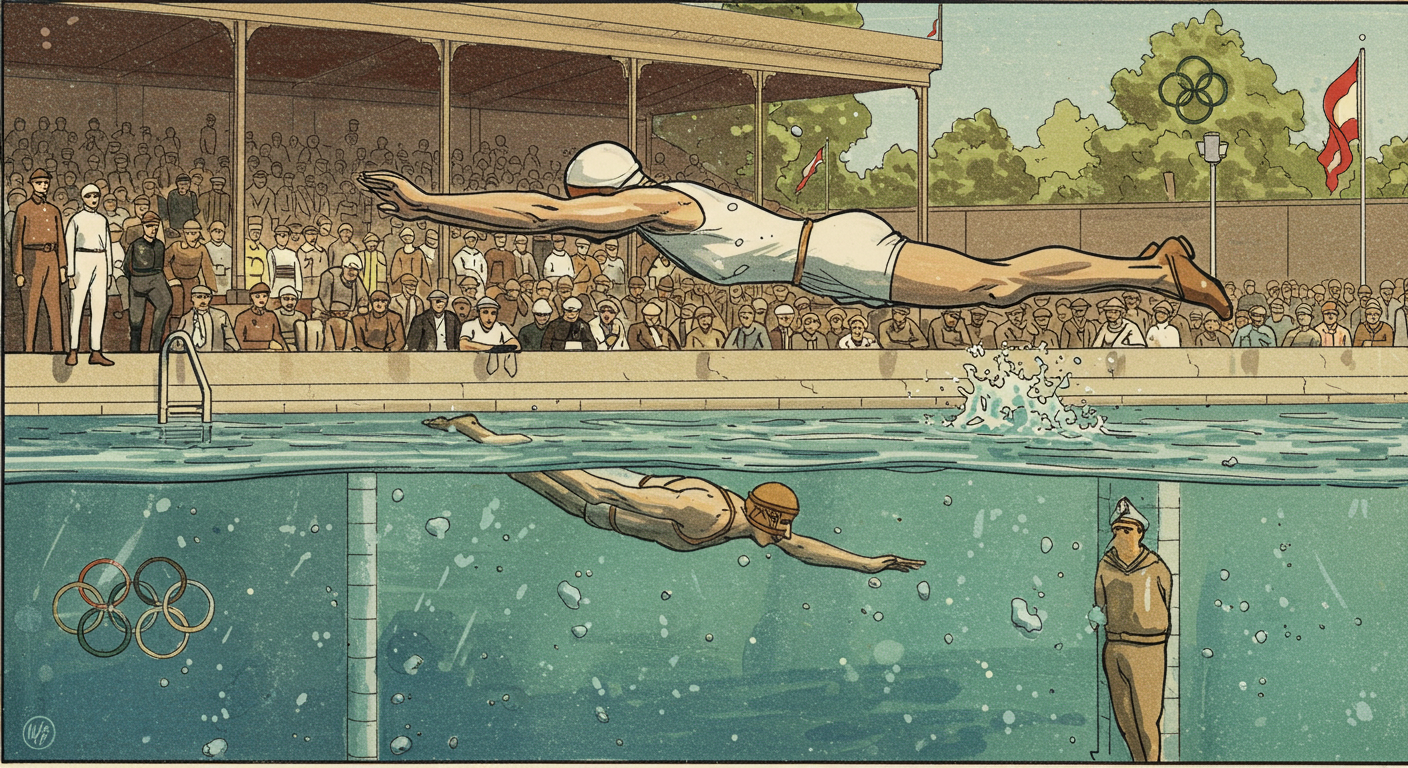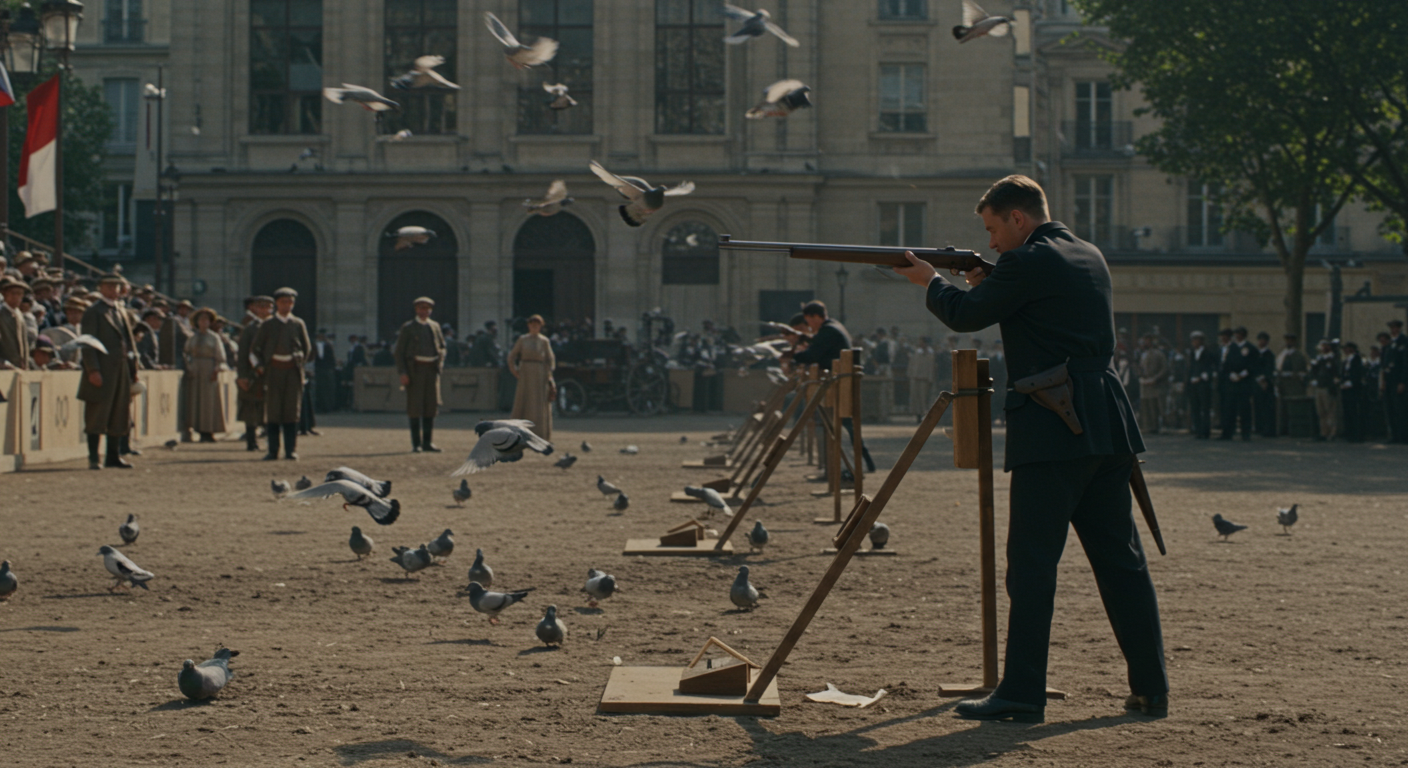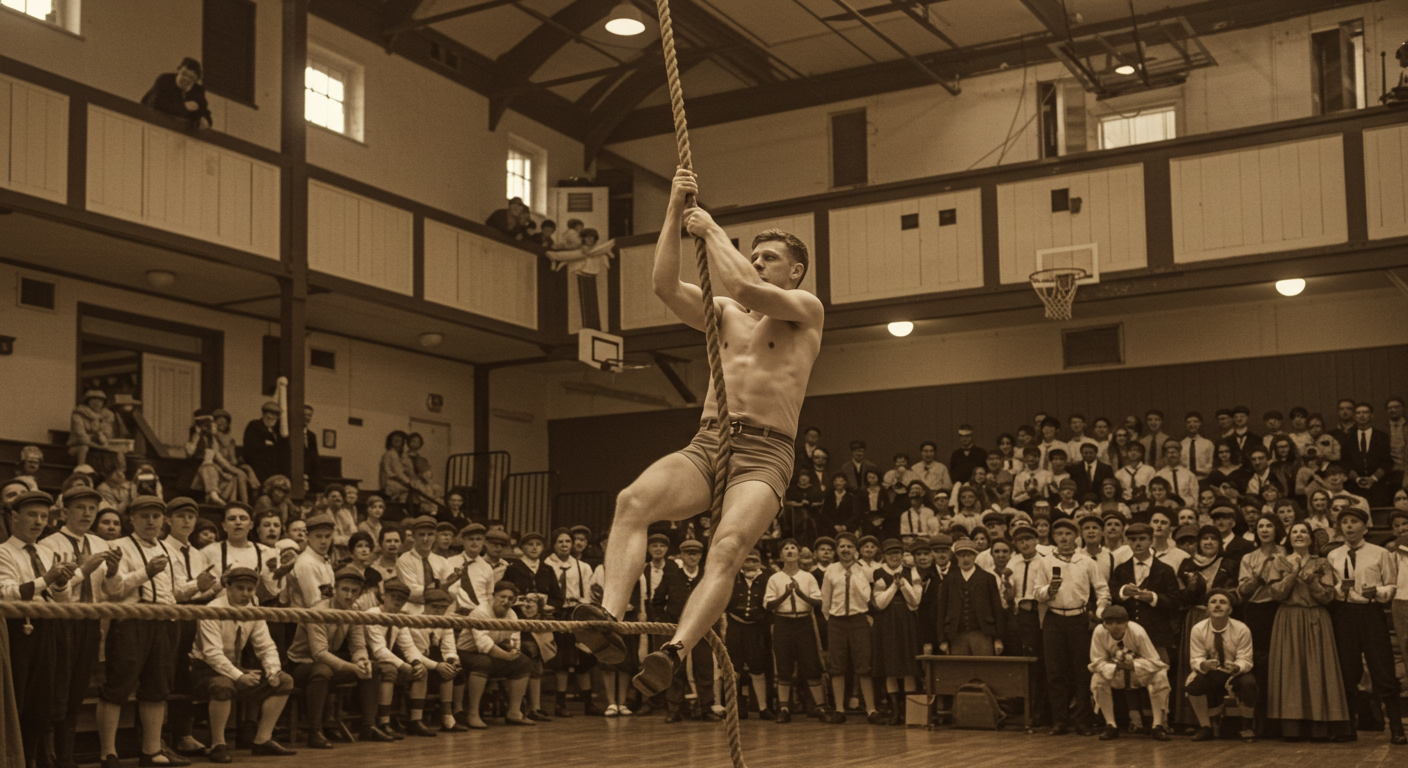
The Olympic Games are known for showcasing the best of international sports, with events that bring together athletes from around the globe to compete at the highest level. While modern viewers are familiar with popular Olympic sports like swimming, gymnastics, and track and field, the history of the Games includes many lesser-known sports that have come and gone over the years. These forgotten Olympic sports, such as tug-of-war and croquet, once held a place in the competition but were eventually removed. This article delves into some of these surprising sports, why they were included in the Olympics, and the reasons they were ultimately dropped from the program.
Tug-of-War: A Test of Strength and Strategy in Forgotten Olympic Sports
History and Olympic Inclusion
Tug-of-war, a sport often associated with schoolyards and community fairs, was once a serious Olympic event. It was part of the Olympic program from 1900 to 1920. The sport was included in the athletics category, where teams of eight would compete to pull their opponents over a designated line. During its time as an Olympic sport, tug-of-war attracted considerable attention and participation from various nations.
Why It Was Included
The inclusion of tug-of-war in the Olympics was largely due to its popularity in Europe and the United States during the late 19th and early 20th centuries. The sport was seen as a pure test of strength, endurance, and teamwork—qualities that embodied the Olympic spirit. The straightforward nature of the sport, requiring minimal equipment and simple rules, also made it an attractive addition to the Games.
Why It Was Removed
After the 1920 Olympics, tug-of-war was removed from the Olympic program. The decision to exclude the sport was influenced by several factors. Firstly, the IOC began to streamline the number of sports in the Olympics to focus on events that were more globally recognized and standardized. Additionally, as the Games grew, there was a push to include more individual sports that highlighted personal athletic achievement, as opposed to team-based events like tug-of-war. The sport’s perceived lack of sophistication and its association with informal settings may have also contributed to its removal.
Croquet: The Aristocratic Pastime Among Forgotten Olympic Sports
History and Olympic Inclusion

Croquet, a sport often associated with leisurely garden parties, was featured in the 1900 Paris Olympics. The event included both singles and doubles matches, with competitors from just a few countries participating. Interestingly, the 1900 Olympics marked the first time that women were allowed to compete in the Games, and croquet was one of the sports where women participated.
Why It Was Included
Croquet was included in the Olympics as part of the effort to introduce a wide variety of sports and showcase the diversity of athletic activities. In France, where the 1900 Olympics were held, croquet was a popular sport among the upper classes, making it a natural choice for inclusion.
Why It Was Removed
Croquet was a one-time event in the Olympics, never to return after the 1900 Games. Its exclusion was primarily due to its lack of international appeal and the small number of participants. The event drew little public interest, and reports suggest that it was poorly attended, with only a single spectator reported to have watched the matches. The sport’s limited global reach and the fact that it was considered more of a recreational activity than a competitive sport likely led to its removal.
Plunge for Distance: The Forgotten Olympic Sport in Aquatics
History and Olympic Inclusion

The plunge for distance was a short-lived Olympic event, featured only once in the 1904 St. Louis Games. This unusual sport involved athletes diving into a pool and remaining motionless while gliding underwater. The winner was the athlete who traveled the farthest distance within a specified time frame (usually 60 seconds) without using any additional swimming strokes.
Why It Was Included
The plunge for distance was included in the 1904 Olympics as part of the broader effort to introduce various aquatic events. At the time, the sport was more widely practiced in the United States, and its inclusion in the Games reflected the local sporting culture.
Why It Was Removed
The plunge for distance was dropped from the Olympics after 1904, primarily due to its lack of excitement and spectator appeal. The event was criticized for being dull to watch, as the athletes simply floated motionless underwater. Additionally, the sport did not have a significant following outside of the United States, and its exclusion was part of the IOC’s effort to focus on more dynamic and internationally recognized events.
Live Pigeon Shooting: A Controversial Forgotten Olympic Sport
History and Olympic Inclusion

Live pigeon shooting is perhaps one of the most controversial sports ever included in the Olympic Games. Featured only once in the 1900 Paris Olympics, the event involved shooting live pigeons released from traps. The goal was to kill as many birds as possible, with the winner being the shooter who downed the most pigeons.
Why It Was Included
The inclusion of live pigeon shooting in the Olympics reflected the sport’s popularity among the European aristocracy at the time. Shooting sports, in general, were seen as tests of skill, precision, and concentration, making them suitable for Olympic competition.
Why It Was Removed
Live pigeon shooting was removed from the Olympic program after 1900 due to widespread public outcry and ethical concerns. The event was heavily criticized for its brutality and the large number of birds killed during the competition. In subsequent Olympics, the sport was replaced by clay pigeon shooting, which is still part of the Games today. The transition to using clay targets was a significant step in making the sport more humane and acceptable to a broader audience.
Rope Climbing: A Test of Upper Body Strength Among Forgotten Olympic Sports

History and Olympic Inclusion
Rope climbing was included in the gymnastics category during the early years of the modern Olympics, appearing in the 1896, 1904, 1906, 1924, and 1932 Games. The event required athletes to climb a vertical rope, with the winner being the one who reached the top in the shortest amount of time.
Why It Was Included
Rope climbing was included in the Olympics as it was a common exercise in gymnastic training, emphasizing upper body strength, agility, and endurance. The sport was particularly popular in Europe and the United States, where it was often part of school physical education programs.
Why It Was Removed
Rope climbing was removed from the Olympic program after 1932 due to the evolving nature of gymnastics and the introduction of new, more dynamic events. As the Olympic gymnastics program expanded, rope climbing was deemed less exciting and relevant compared to other apparatus events like the horizontal bar and rings. The sport’s decline in popularity and its perceived redundancy in the broader context of gymnastics contributed to its exclusion.
Conclusion
The history of the Olympic Games is rich with forgotten Olympic sports that once graced the competition stage but have since been removed for various reasons. Tug-of-war, croquet, plunge for distance, live pigeon shooting, and rope climbing are just a few examples of the diverse and sometimes surprising events that have come and gone. These forgotten Olympic sports were included in the Olympics at a time when the Games were still evolving and experimenting with different forms of competition. Their removal reflects changes in public interest, ethical considerations, and the ongoing effort by the IOC to present a streamlined and globally appealing set of sports.
While these sports are no longer part of the Olympics, they remain fascinating footnotes in the history of the Games, offering a glimpse into a different era of athletic competition. As the Olympics continue to evolve, it’s interesting to imagine which current sports might one day join the ranks of these forgotten Olympic sports.
To understand the criteria the IOC uses for including and excluding sports, visit the official IOC website.

